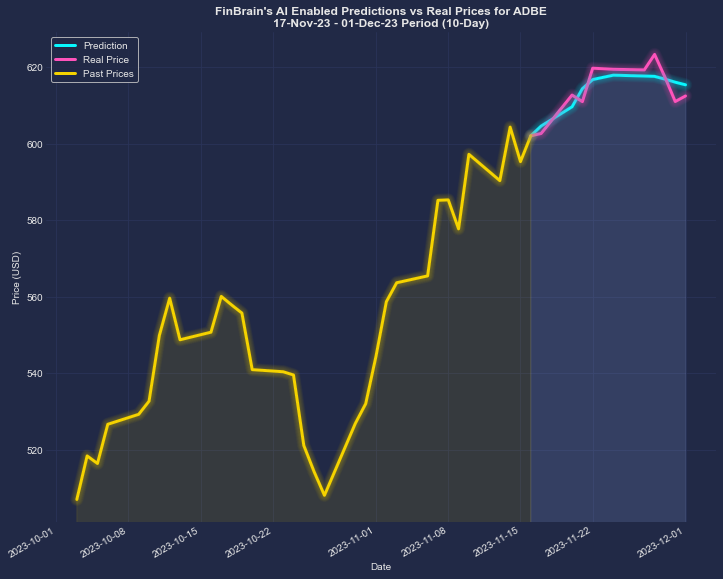20 Recommended Facts For Picking AI Stock {Investing|Trading|Prediction|Analysis) Websites
Top 10 Ways To Evaluate The User Experience And Interface Of Ai Platforms For Trading StocksThe User Interfaces (UI) and the User Experiences of AI-based stock trading platforms are essential to their efficiency, usability overall satisfaction, and overall success. Poorly designed interfaces can hinder decision-making even if AI models that underlie it are reliable. Here are the top 10 tips for evaluating the UI/UX.
1. Assess the ease of use, intuitiveness and simplicity
Navigation: Ensure the platform is simple to navigate using clear menus, buttons, and workflows.
Learning curve - Determine the speed at which a user is able to grasp the platform and comprehend the platform without a lot of training.
Verify the same patterns of design across different platforms (e.g. buttons or color schemes, etc.).).
2. Check Customizability
Dashboard customization: Check to see if you can alter dashboards to show relevant data, graphs, and metrics.
Layout flexibility is crucial You should be able to rearrange and resize charts as well as widgets and tables.
Look up the platform's dark/light options or visual preferences.
3. Visualize information using the Assess Tool
Quality of the chart: Make sure that the platform provides high-quality, interactive charts (e.g., line charts, candlestick charts) with zoom and pan functions.
Visual clarity Make sure that all data is presented in a clear manner, including labels, legends and tips-offs.
Real-time Updates: Make sure to check if your visualizations reflect the latest market information.
4. Test for Reactivity and Speed
Even when working with massive datasets and complex calculations, the platform should load quickly.
Real-time Performance: Find out if the platform has the ability to handle data feeds at no delay.
Cross-device compatibility: Check whether your device can be used on every device (desktops and mobiles, as well as tablets).
5. Examine accessibility
Mobile app accessibility: See whether the platform has an app for mobile devices that has full functionality for on-the-go trading.
Keyboard Shortcuts: Ensure that your platform allows keyboard shortcuts.
Accessibility features: Determine whether the platform is compliant with accessibility standards (e.g., screen reader support and high-contrast modes).
6. Check out the Search and Filtering Functions and Examine Search
Search efficiency: Ensure the platform allows users to quickly look up the indices, stocks, or other assets.
Advanced filters: See whether users have the ability to apply filters (e.g., by sector, market cap or performance indicators) to narrow down the results.
Saved searches: Check if the platform allows users to save frequently used searches or filters.
7. Make sure you are aware of alerts and other notifications.
Alerts that can be customized: Make sure users are able to configure alerts to certain conditions (e.g. prices thresholds, spikes in volume, news events, etc.).).
Notification Delivery: Check to see if notifications are sent in different ways (e.g. via SMS, email, or app notifications).
Timing - Ensure that alerts are issued quickly and precisely.
8. Connect to other tools
Broker integration: Make sure that the platform is integrated seamlessly with your brokerage account for simple trade execution.
API access. Find out if the platform provides API access to users with advanced capabilities to create custom tools and workflows.
Third-party integrations: Verify if the platform supports integrations with other tools (e.g., Excel, Google Sheets and trading bots).
9. Assessment Help and Support Features
Take a look at the onboarding instructions.
Help Center: Check that the platform provides a comprehensive and well-organized help centre.
Customer support: See whether you will receive prompt responses via the platform (e.g. through live chat, email, or on the phone).
10. Test Overall Customer Satisfaction
User feedback: Read reviews and feedback from users to determine overall satisfaction with the platform's UI/UX.
Trial period: Take advantage of a no-cost demo or trial to test the usability of the platform.
How does the platform handle errors and edge cases?
Bonus Tips
Aesthetics. While the design of functional products is important but a visually appealing design can enhance user experience.
Testing the performance of the platform under extreme stress to make sure that it is responsive and stable during periods of high volatility.
Community and forums: Check if the platform has an active community of users or forum for users to provide feedback and share tips.
These guidelines will allow you to assess the user interface and user experience AI trading platforms that can predict or analyze price of stocks. You can make sure they're effective, aligned to your trading requirements, and friendly. A good UI/UX can be a powerful tool that can aid you in making better decisions and make better trades. View the best click this on using ai to trade stocks for more examples including ai for trading, ai stocks, ai invest, ai trading software, incite, trading ai, using ai to trade stocks, ai for stock trading, ai trading platform, trading ai bot and more.

Top 10 Tips On How To Evaluate The Speed And Latency Of The Ai Stock Predicting/Analyzing Trading Platform
For algorithmic, high-frequency, and active traders the area of speed and latencies are crucial when considering AI platforms for stock forecasting and analyzing. Milliseconds of delay could negatively impact profitability and trade execution. Here are the top 10 strategies for evaluating speed and latency on these platforms:
1. Real-Time data feeds are a great way to determine the quality of the real-time data you have
Speed of delivery of data - Ensure that the platform is able to provide real-time information with minimal delay (e.g. a sub-millisecond latency).
Find out the distance of the source to the most important exchanges.
Data compression: Check if the platform uses effective techniques for data compression to speed up data delivery.
2. Test Trade Execution Rate
Processing time for orders: Check how quickly the platform handles and executes trades when you have submitted an order.
Direct market access (DMA) Make sure the platform offers DMA which lets orders be delivered directly to the exchange without intermediaries.
Check for detailed execution reporting including timestamps and confirmations of the order.
3. Examine the Receptivity of Platforms
User interface (UI) speed: See how quickly the platform's UI responds to inputs (e.g. click buttons, loading charts).
Chart updates: Verify that charts and visualisations update in real-time, without lag.
Mobile apps' performance If you are using a mobile app, ensure that it runs just as fast as your desktop version.
4. Verify that the infrastructure is not low-latency.
Server locations: Make sure that the platform uses low-latency servers located near major exchanges or financial hubs.
Look for colocation options. These services permit you to host your algorithms near the exchange.
High-speed networks: Verify whether the platform is using fiber-optic networks that are high-speed or low-latency technologies.
5. Evaluation of Backtesting and Simulation speed
Check how quickly the platform analyzes and processes historical data.
Simulation latency: Ensure that the platform is able to simulate trading in real-time without any noticeable delay.
Parallel processing: Find out whether your platform supports the concept of distributed computing or parallel processing to speed up complex calculations.
6. Estimate API Latency
API response time Measuring how quickly the platform’s API responds (e.g. retrieving market data or placing orders).
Rate limits: Verify that the API has adequate limits on rates so that there are no delays during high-frequency trading is taking place.
WebSocket support: Find out whether the platform supports WebSocket protocols for real-time and low-latency data streaming.
7. Test stability of the platform under load
High-volume trading: Play high-volume trading scenarios to see if the platform remains reliable and stable.
Test your platform during periods of market volatility.
Testing stress Check whether the platform permits users to test their strategy in extreme circumstances.
8. Evaluation of Connectivity and Network
Internet speed requirements: Ensure your internet connection is at the platform's recommended speed to achieve optimal performance.
Redundant connections: Check if the platform supports redundant internet connections to prevent interruptions.
VPN latency: When using the VPN platform, verify whether the latency is substantial and if you have alternatives.
9. Make sure you are using Speed Optimization features.
Pre-trade Analytics: Make sure the platform offers pre-trade analysis to improve the routing of orders, execution speed and other variables.
Smart order routing: Find out whether your application is using SOR to determine the most cost-effective and fastest execution site.
Monitoring latency: Find out whether the platform has tools to analyze and monitor latency in real-time.
10. Review User Feedback and Benchmarks
User reviews: Read feedback from users to evaluate the platform's speed as well as latency performance.
Third-party benchmarks by third parties. Find benchmarks that are independent or reviews that evaluate a platform's speed with other platforms.
Case studies Ask the platform if it has any cases studies or reviews that highlight its low latency capabilities.
Bonus Tips
Trial period: Take a the free trial or demo of the platform to test how it performs in real situations.
Support for customers: Check to determine if the platform has assistance for issues with latency or optimization.
Hardware requirements: Check if the platform requires specific hardware (e.g. high-performance PCs) to operate at its maximum speed.
Utilizing these guidelines, it is possible to precisely assess the speed, latency and precision of AI stock prediction/analyzing trading systems. This will enable you to select a platform based on your trading requirements as well as reducing any delays. A low latency, particularly for high-frequency and algorithmic trading, is vital. Even the smallest delays could significantly affect profits. Follow the top rated best stock analysis app tips for website recommendations including ai stock market, trading chart ai, trade ai, incite ai, coincheckup, ai investing, ai based trading platform, ai stock prediction, ai stock, ai stock trading app and more.
